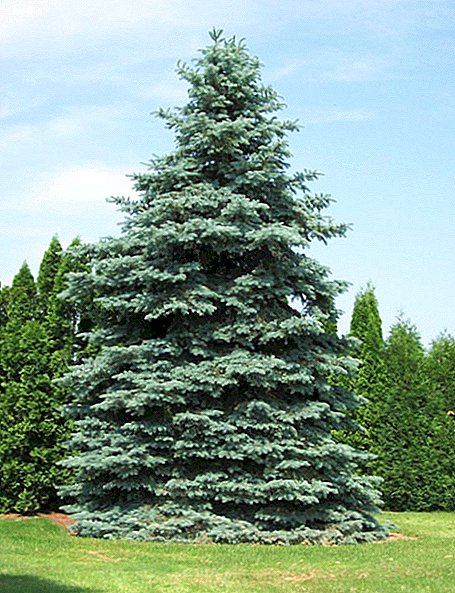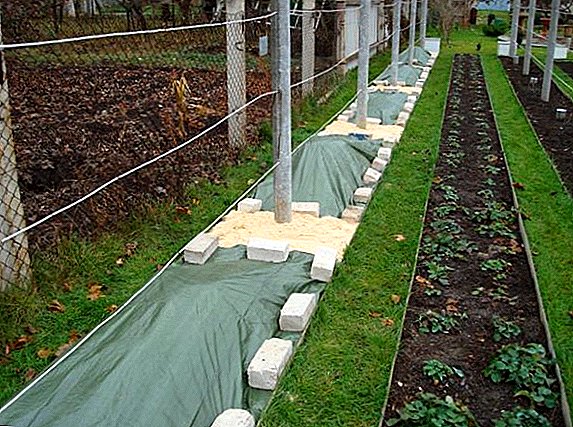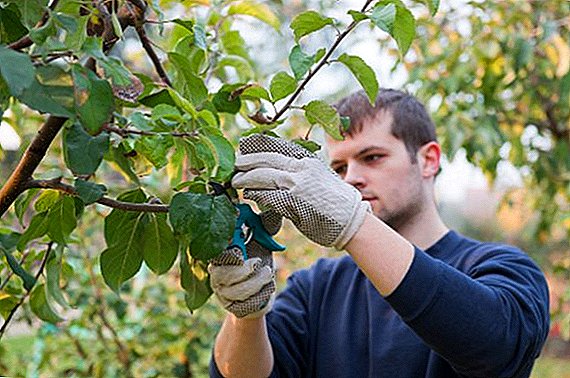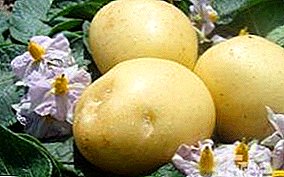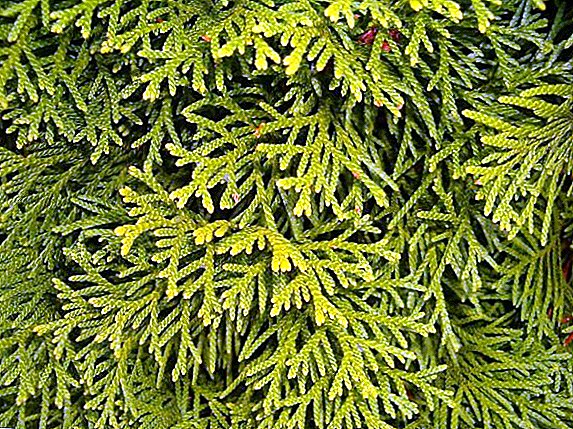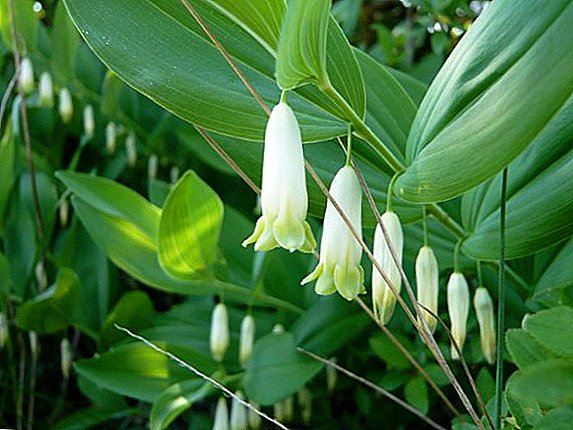 Anyone who first saw what Lithops look like will be able to believe that there are living stones. As a matter of fact, in translation the name of this South African plant also means "externally as a stone" ("similar to stones"). In fact, these plants are more like smooth pebbles, which we all saw on the Black Sea beaches. And these amazing exotic animals can be applied with a little effort, landed directly on their windowsill and even in the open field. How to grow lithops from seeds, read below.
Anyone who first saw what Lithops look like will be able to believe that there are living stones. As a matter of fact, in translation the name of this South African plant also means "externally as a stone" ("similar to stones"). In fact, these plants are more like smooth pebbles, which we all saw on the Black Sea beaches. And these amazing exotic animals can be applied with a little effort, landed directly on their windowsill and even in the open field. How to grow lithops from seeds, read below.
Requirements for sowing material
It is best to buy seeds of flowering stones in specialized stores, but with a strong desire you can collect the seed yourself (unless, of course, you imagine what the seeds of the Lithops look like), or ask those who already grow these what plants.
Important! Seeds cannot be obtained from a plant growing alone on a window sill; in order to grow by this method, you must have at least two specimens (of course, of the same species).

The good news: unlike many other plants, the seed material from the "living stones" retains its suitability for planting for decades, so you can not worry about the freshness of the seeds you have extracted.
Did you know? And yet the age of the seeds matters: those just harvested, they germinate poorly. Germination may decrease after prolonged storage. It is believed that the ideal seed should be three years old.
If you collected the seeds yourself, it is best to store them right in the middle of the fruit (capsule). In this case, before planting, the fruit is carefully enough to break and remove the seeds, or to lower the fruit into the water - the seeds themselves will separate and sink to the bottom, all that remains is to drain the water and dry the planting material. 
The optimal time for sowing
Sowing Lithops can be carried out from the beginning of spring until the end of summer, however, experienced "breeders" claim that they carried out this procedure quite successfully during the cold season. This has its own meaning, because if you are going to go to the sea in the summer, then young plants that have not yet become strong can simply die without proper care. The first months after planting the Lithops requires careful maintenance and compliance with all the necessary conditions of detention, so it is worthwhile to think over your immediate plans before starting to grow these beauties.
Did you know? Lithops are very fond of light, it is this that determines the choice of the optimal time for landing. - daylight should be as long as possible. But if you can provide shoots with artificial illumination, then sowing can be done even in winter.
It was also noticed that the seeds germinate and grow best of all with significant average daily temperature fluctuations. Under normal conditions, it is difficult to provide such fluctuations in the hot summer, so it is better to opt for the off-season. 
Capacity Requirements
Too deep capacity for germination of "live stones" should not be chosen. Better fit wide containers 5-10 cm tall, such that are used for ordinary seedlings. It is recommended to lay a thick layer of drainage on the bottom of such a container, and sprinkle it with sand on top.
Choosing an earth mixture
Since we are dealing with succulents, you can simply buy a substrate for cacti in a specialized shop. But you can fantasize.
Important! The sand in the earth mixture must be present! It is also good to add small stones, gravel, crushed brick or expanded clay to the mixture.
Other parts - turf or clay soil with an admixture of peat or humus.
Lithops love light, non-greasy soil in which water will not stagnate. 
Seed preparation before planting
Seeds of Lithops, before planting, must be kept in a disinfectant solution for several hours.
Important! Do not leave the seeds in a humid environment for a long time, otherwise they will begin to germinate, and subsequently you risk damaging the first roots. Also, you can not dry the seeds after soaking.
Any special preparation (for example, root roots), ordinary potassium permanganate or juice squeezed from aloe leaf is suitable for soaking. 
Seed planting process
Lithops - quite capricious plants, and their landing is a whole ritual.
At first it is necessary to steam the prepared soil well, watering it intensively with hot water.
Important! Before sowing, the soil should cool to room temperature!
Now proceed to the landing itself.
Did you know? Lithops seeds are not buried in the soil, but laid out on its surface. - so they will germinate!
In order not to damage the swollen seeds, you can use a needle or a knife: dip the tip into the water, stick each individual seed on it and spread it on the ground with a distance of about half a centimeter. 
Seeds also multiply: plumeria, blueberries, Indian onions, lisianthus, clivia, adenium, arugula, mountain ash (chokeberry) Aronian, Erica, karyopteris, hellebore, fittonia, canna, fennel and aglaonemoya.When the sowing is over, put the pot in a wider container filled with water to keep the soil moist, top it with a film or glass and place it on a well-lit window sill. At least once a day, the film should be removed for a few minutes, at the same time gently sprinkle the soil in order to avoid drying.
Did you know? If you replace the film with an agrofiber or a light, light air-permeable cloth, the conditions for ventilation may not be so strict.
If all conditions are created and the seed material was of high quality, the “flowering stones” will “come to life” on average in about a week and a half.
Conditions and care for crops
The emergence of seedlings is not a reason to relax, as it is necessary to care for the Lithops after sowing very carefully. The film on the container should remain for at least another month, however, young sprouts need much more airing. First, they must be gradually accustomed to life outside the greenhouse, and secondly, without oxygen, the plant can moldy. Therefore, during the day, at least three times for 15–20 minutes, the film is removed, the earth, as it dries, sprayed and then covered again.
Important! During this period, young seedlings are very sensitive, so they should not be watered (only sprayed, and the soil, not the plant) and left without film for a long time (the dry air of the apartment can destroy them). In addition, for all their light-loving nature, it is necessary to protect the germs from direct sunlight.
After a week or two after the emergence of shoots, the film can be left only for the night when the temperature in the room drops (as was said, a strong difference in day and night temperatures is ideal for the rapid growth of young lithops). 
Did you know? If some seeds never sprouted - do not despair: they can be very carefully removed from the surface of the earth, dried and tried to land in a year.
Conditions and care for seedlings
When sprouts get a little stronger, the film can be removed completely. At this stage, you also need to remove the water-filled tray and reduce the intensity of watering, because the roots of young plants are highly susceptible to rotting in an over-wetted environment (do not forget, you are dealing with the closest relatives of cacti). The air in the room should be warm enough - at least 20 ° C, and better - even higher.
In addition to humidity and temperature, the growth of live stones is greatly influenced by lighting. 
Did you know? If young plants start to reach up - This is a reason to add light to them. Excessive light may indicate a change in color to red and stunted.
Lithops have another feature that is important when caring for them at home: being quite demanding of external conditions, they are also very poorly tolerate frequent movements from place to place. Therefore, it is highly desirable to think over temperature, humidity and lighting well in advance, since you will not be allowed to experiment "along the way" with these exotic flowers.
Lithops can only be watered with soft water (melted snow will work very well), and you should avoid any dressings and pickles until the plant matures.
Strengthened shoots are useful to carefully overlay pebbles: in addition to the aesthetic appearance, this will support the seedlings in a vertical state (the plant cannot fall onto the soil, which, unfortunately, often happens) and protects the soil from weed germination. Coarse sand can also be used instead of gravel.
Indoor plants such as cactus, hippeastrum, chrysanthemum, tselogina orchid, bougainvillea, freesia, date palm, alstroemeria, savory, lemon, fragrant pantrantus and cynium will create a cozy and comfortable atmosphere indoors.

Transplantation of small Lithops: needed or not?
Transplanting small lithops is not needed. Diving young seedlings is a rather forced procedure, when the seeds have risen too tightly, and simply throwing away extra specimens does not rise. To avoid such a heavy procedure for the plant, it is better to sow the seeds right away not very closely, then, even in some crampedness, you will be able to preserve everything that has sprouted.
Transplant and care for Lithops as adults begin from the second year of life.
Lithops - incredibly beautiful and original plants, and although growing them from seeds is troublesome and sometimes not successful the first time, this task is completely within the power of everyone who wants it, and the result is definitely worth the effort!



